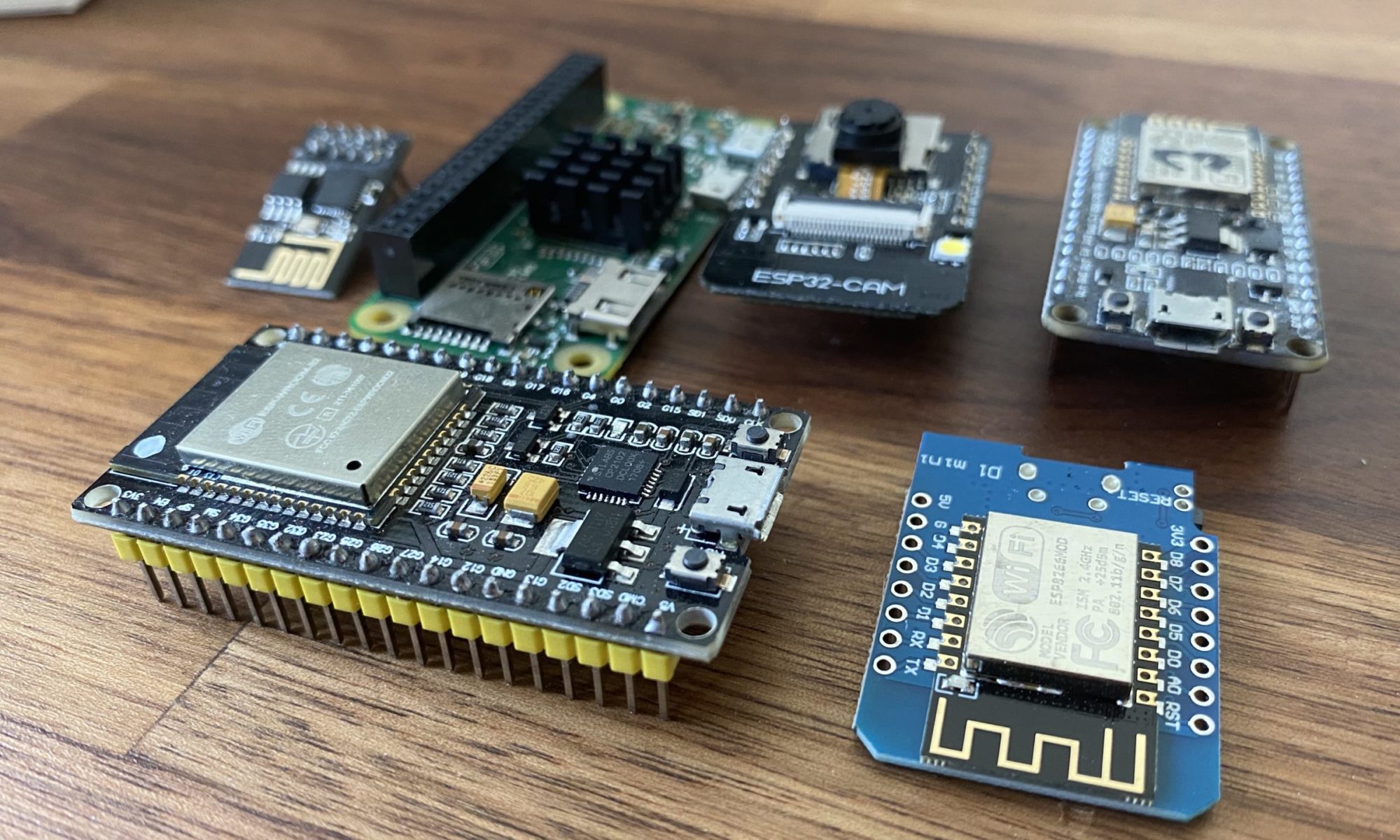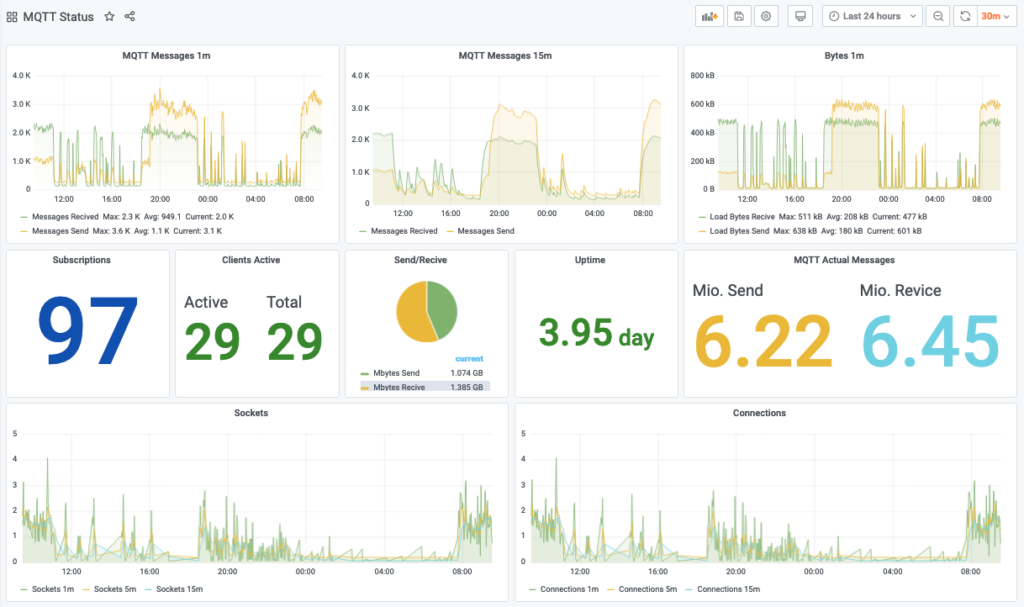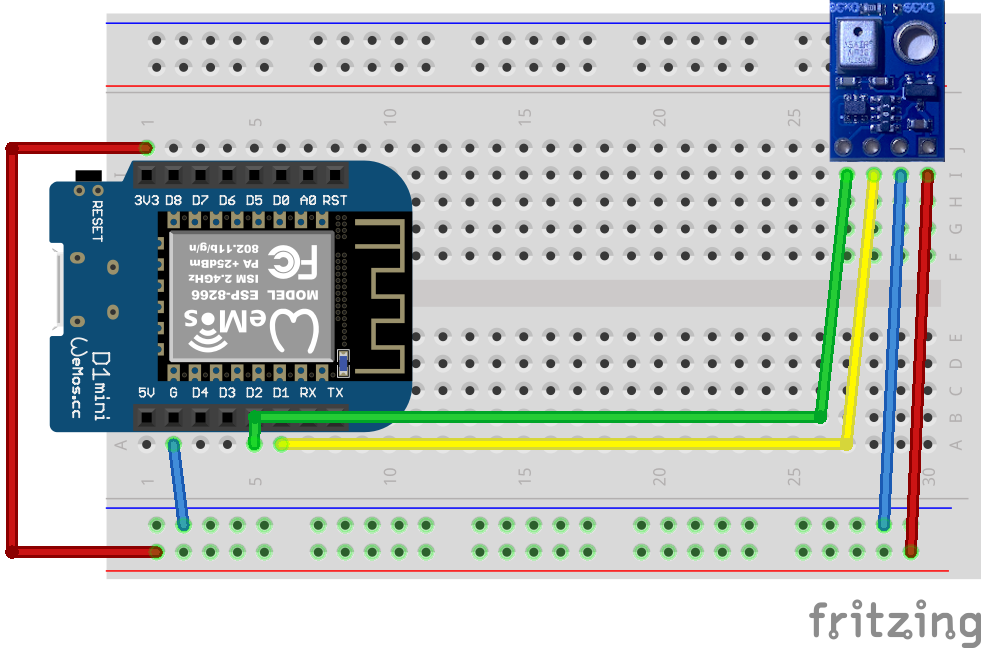Einleitung
Die Integration smarter Heizsysteme in eine Home-Automation-Lösung wie Home Assistant (HASS) ermöglicht nicht nur die zentrale Steuerung, sondern auch detaillierte Analysen und Automatisierungen. Dieser Beitrag zeigt, wie eine Dimplex-Wärmepumpe mit der NWPM Touch-Erweiterung über MQTT mit Home Assistant verbunden wird. Wir richten uns an fortgeschrittene Nutzer, die mit MQTT und YAML bereits vertraut sind.

Die Anleitung basiert auf den von Dimplex zur verfügung gestellten Informationen:
https://dimplex.atlassian.net/wiki/spaces/DW/pages/3021930597/MQTT+Anbindung
Voraussetzungen
Für die Integration benötigen Sie:
- Einen Home Assistant Server, idealerweise auf einem Raspberry Pi, Proxmox oder vergleichbarer Hardware.
- Eine Dimplex-Wärmepumpe mit Touch-Display und einer NWPM Touch-Erweiterung.
- Einen MQTT-Broker, z. B. Mosquitto, entweder als Standalone-Server oder auf der NWPM-Baugruppe.
Optional: Ein Broker-to-Broker-Setup, um einen externen Broker mit dem integrierten MQTT-Server der NWPM zu verbinden.
Besonderheiten bei meiner Dimplex-MQTT-Anbindung
Die Dimplex NWPM Touch-Erweiterung bietet einen eingebauten MQTT-Server, der entweder direkt genutzt oder wie bei mir über ein Broker-to-Broker-Setup mit einem externen Broker verbunden werden kann. Die Konfigurationsdatei für das Broker-to-Broker-Setup sieht beispielsweise so aus:
# connection dimplex
connection dimplex
address 192.168.x.x:61894
remote_username mqtt
remote_password <password>
try_private true
bridge_insecure true
topic # out 0
topic # in 0
In unserem Setup nutzen wir einen Mosquitto-Broker auf Proxmox in einem LXC-Container und empfehlen, diesen für mehr Flexibilität zu verwenden.
Derzeit nutze ich nur die Informationen aus der Wärmepumpe, die Steuerung werde ich zu einem späteren Zeitpunkt einrichten.
Schritt 1: MQTT in Home Assistant aktivieren
Stellen Sie sicher, dass der MQTT-Integration in Home Assistant aktiviert ist. Dies erfolgt über die configuration.yaml oder über die Benutzeroberfläche von Home Assistant.
Beispiel für die configuration.yaml:
mqtt:
broker: 192.168.x.x # IP-Adresse des MQTT-Brokers
username: mqtt
password: <password>
Starten Sie Home Assistant neu, um die Änderungen zu übernehmen.
Schritt 2: YAML-Konfiguration der Sensoren
Um die Daten der Wärmepumpe in Home Assistant anzuzeigen, fügen Sie die Sensoren in der configuration.yaml hinzu. Hier ist eine Übersicht wichtiger Sensoren:
sensor:
- name: "Wärmepumpe Außentemperatur (R1)"
unique_id: '1301a_temperature'
state_topic: "extern/broadcast/twin_reported_state"
value_template: "{{ value_json.telemetry['1301a'] }}"
unit_of_measurement: "°C"
device_class: temperature
qos: 1
- name: "Wärmepumpe Temperatur Ruecklauf (R2)"
unique_id: '1294a_temperature'
state_topic: "gateway/broadcast/changed_on/modbus"
value_template: "{{ value_json['1294a']['value_batch']['1294a']['value'] }}"
unit_of_measurement: "°C"
device_class: temperature
qos: 1
- name: "Wärmepumpe Temperatur Vorlauf (R9)"
unique_id: '1300a_temperature'
state_topic: "gateway/broadcast/changed_on/modbus"
value_template: "{{ value_json['1300-1301a']['value_batch']['1300a']['value'] }}"
unit_of_measurement: "°C"
device_class: temperature
qos: 1
- name: "Wärmepumpe Temperatur Warmwassersoll"
unique_id: '1042i_temperature'
state_topic: "extern/broadcast/twin_reported_state"
value_template: "{{ value_json.telemetry['1042i'] }}"
unit_of_measurement: "°C"
device_class: temperature
qos: 1
- name: "Wärmepumpe Temperatur Warmwassersoll Max"
unique_id: '1044i_temperature'
state_topic: "extern/broadcast/twin_reported_state"
value_template: "{{ value_json.telemetry['1044i'] }}"
unit_of_measurement: "°C"
device_class: temperature
qos: 1
- name: "Wärmepumpe Temperatur Warmwassersoll Min"
unique_id: '1045i_temperature'
state_topic: "extern/broadcast/twin_reported_state"
value_template: "{{ value_json.telemetry['1045i'] }}"
unit_of_measurement: "°C"
device_class: temperature
qos: 1
- name: "Wärmepumpe Temperatur Warmwasser (R3)"
unique_id: '1305a_temperature'
state_topic: "gateway/broadcast/changed_on/modbus"
value_template: "{{ value_json['1305a']['value_batch']['1305a']['value'] }}"
unit_of_measurement: "°C"
device_class: temperature
qos: 1
- name: "Wärmepumpe Status (Telemetry)"
unique_id: '530u_status_telemetry'
state_topic: "extern/broadcast/twin_reported_state"
value_template: "{{ value_json.telemetry['530i'] }}"
qos: 1
- name: "Wärmepumpe Sperrmeldungen (Telemetry)"
unique_id: '533i_sperrmeldungen_telemetry'
state_topic: "extern/broadcast/twin_reported_state"
value_template: "{{ value_json.telemetry['533i'] }}"
qos: 1
- name: "Wärmepumpe Störmeldungen (Telemetry)"
unique_id: '531i_stoermeldungen_telemetry'
state_topic: "extern/broadcast/twin_reported_state"
value_template: "{{ value_json.telemetry['531i'] }}"
qos: 1
- name: "Wärmepumpe Sensorfehler (Telemetry)"
unique_id: '532i_sensorfehler_telemetry'
state_topic: "extern/broadcast/twin_reported_state"
value_template: "{{ value_json.telemetry['532i'] }}"
qos: 1
- name: "Wärmepumpe Status"
unique_id: '530i_status'
state_topic: "gateway/broadcast/changed_on/modbus"
value_template: "{{ value_json['530-533i']['value_batch']['530i']['value'] }}"
qos: 1
- name: "Wärmepumpe Verdichter 1"
unique_id: '1500d_status_telemetry'
state_topic: "gateway/broadcast/changed_on/modbus"
value_template: "{{ value_json['1500d']['value_batch']['1500d']['value'] }}"
qos: 1
- name: "Wärmepumpe Verdichter 2"
unique_id: '1501i_status_telemetry'
state_topic: "extern/broadcast/twin_reported_state"
value_template: "{{ value_json.telemetry['1501i'] }}"
qos: 1
- name: "Wärmepumpe Ventilator (M2)"
unique_id: '1502d_status_telemetry'
state_topic: "gateway/broadcast/changed_on/modbus"
value_template: "{{ value_json['1502-1505d']['value_batch']['1502d']['value'] }}"
qos: 1
- name: "Wärmepumpe Primärpumpe (M11)"
unique_id: '1506d_status_telemetry'
state_topic: "gateway/broadcast/changed_on/modbus"
value_template: "{{ value_json['1505-1507d']['value_batch']['1506d']['value'] }}"
qos: 1
- name: "Wärmepumpe Heizungspumpe (M13)"
unique_id: '1512d_status_telemetry'
state_topic: "extern/broadcast/twin_reported_state"
value_template: "{{ value_json.telemetry['1512d'] }}"
qos: 1
- name: "Wärmepumpe Warmwasserpumpe (M18)"
unique_id: '1517d_status_telemetry'
state_topic: "gateway/broadcast/changed_on/modbus"
value_template: "{{ value_json['1516-1517d']['value_batch']['1517d']['value'] }}"
qos: 1
- name: "Wärmepumpe Zusatzumwälzpumpe (M16)"
unique_id: '1516d_status_telemetry'
state_topic: "gateway/broadcast/changed_on/modbus"
value_template: "{{ value_json['1516-1517d']['value_batch']['1516d']['value'] }}"
qos: 1
- name: "Wärmepumpe Heizungspumpe (M15)"
unique_id: '1514d_status_telemetry'
state_topic: "extern/broadcast/twin_reported_state"
value_template: "{{ value_json.telemetry['1514d'] }}"
qos: 1
- name: "Wärmepumpe Sammelstörmeldung (H5)"
unique_id: '1523d_status_telemetry'
state_topic: "extern/broadcast/twin_reported_state"
value_template: "{{ value_json.telemetry['1523d'] }}"
qos: 1
- name: "Wärmepumpe Heizungspumpe (M20)"
unique_id: '1515d_status_telemetry'
state_topic: "extern/broadcast/twin_reported_state"
value_template: "{{ value_json.telemetry['1515d'] }}"
qos: 1
Weitere Sensoren, wie für Warmwassersolltemperaturen, Sperrmeldungen oder Pumpenstatus, können auf ähnliche Weise hinzugefügt werden. Ich habe noch nicht alle Werte zu 100% geprüft und je nach ausstattung der Wärmepumpe z.B. mit 2. Heizkreislauf, Solar oder Schwimbad anbindung gibt es auch noch mehr Werte die Interessant sein können. Dazu kann man die Adressen auf der Wiki Seite von Dimplex nachschlagen.
Hier ist eine detaillierte Erklärung der einzelnen Elemente anhand des Beispielsensors „Wärmepumpe Außentemperatur (R1)“:
YAML-Abschnitt:
sensor:
- name: "Wärmepumpe Außentemperatur (R1)"
unique_id: '1301a_temperature'
state_topic: "extern/broadcast/twin_reported_state"
value_template: "{{ value_json.telemetry['1301a'] }}"
unit_of_measurement: "°C"
device_class: temperature
qos: 1
1. sensor
Die oberste Ebene definiert einen oder mehrere Sensoren. In diesem Fall wird eine Liste von Sensoren definiert, daher wird ein - verwendet, um den einzelnen Sensor zu beschreiben.
2. name
name: "Wärmepumpe Außentemperatur (R1)"
- Beschreibung: Der Anzeigename des Sensors, der in der Benutzeroberfläche von Home Assistant erscheint.
- Empfehlung: Wählen Sie einen klaren und eindeutigen Namen, um den Sensor einfach zu identifizieren.
3. unique_id
unique_id: '1301a_temperature'
- Beschreibung: Eine eindeutige ID für den Sensor. Sie ermöglicht es Home Assistant, den Sensor auch nach Änderungen in der Konfiguration wiederzuerkennen.
- Hinweis: Verwenden Sie eine konsistente Struktur, idealerweise basierend auf der Datenquelle. Hier wurde der Modbus-Registercode
1301averwendet, ergänzt durch_temperaturezur besseren Lesbarkeit.
4. state_topic
state_topic: "extern/broadcast/twin_reported_state"
- Beschreibung: Das MQTT-Topic, aus dem der Sensor seine Daten bezieht.
- Beispiel: In diesem Fall hört der Sensor auf Nachrichten im Topic
extern/broadcast/twin_reported_state. - Wichtig: Die Topics müssen exakt mit denen übereinstimmen, die die NWPM-Baugruppe sendet.
5. value_template
value_template: "{{ value_json.telemetry['1301a'] }}"
- Beschreibung: Ein Template, um die empfangenen Daten aus dem MQTT-Payload zu extrahieren.
- Details:
value_json: Nimmt an, dass die empfangene Nachricht ein JSON-Format hat.telemetry['1301a']: Greift auf das Feld1301ainnerhalb dertelemetry-Struktur zu. Dieses Feld enthält den Wert für die Außentemperatur.
- Empfehlung: Überprüfen Sie die MQTT-Nachrichtenstruktur mit Tools wie MQTT Explorer, um sicherzustellen, dass der Zugriff korrekt definiert ist.
6. unit_of_measurement
unit_of_measurement: "°C"
- Beschreibung: Gibt die Einheit an, in der der Wert dargestellt wird.
- Beispiel: In diesem Fall wird die Temperatur in Grad Celsius (
°C) angezeigt. - Wichtig: Home Assistant verwendet diese Einheit auch für Konvertierungen und Darstellungen in Diagrammen.
7. device_class
device_class: temperature
- Beschreibung: Definiert die Art des Sensors (z. B. Temperatur, Feuchtigkeit, Batterie).
- Beispiel: Der Wert
temperaturesignalisiert Home Assistant, dass der Sensor Temperaturdaten liefert. Dies beeinflusst, wie die Daten dargestellt werden (z. B. mit einem Thermometer-Symbol).
8. qos
qos: 1
- Beschreibung: Die Quality of Service (QoS)-Stufe für MQTT-Nachrichten.
0(Default): Keine Zustellungsgarantie.1: Mindestens einmalige Zustellung (empfohlen für wichtige Daten).2: Genau einmalige Zustellung (weniger häufig verwendet).
- Empfehlung: Für Sensoren, bei denen Datenintegrität wichtig ist, sollte mindestens QoS 1 verwendet werden.
Zusätzliche Hinweise zur Konfiguration
- Validierung: Nach der Einrichtung der YAML-Datei kann die Konfiguration in Home Assistant über Einstellungen → Einstellungen prüfen validiert werden.
- Fehlerbehebung: Falls der Sensor nicht funktioniert, überprüfen Sie:
- Ob MQTT-Nachrichten im definierten Topic empfangen werden (z. B. mit MQTT Explorer).
- Ob das
value_templatekorrekt auf die JSON-Daten zugreift. - Ob die Verbindung zum Broker korrekt eingerichtet ist.
Mit dieser detaillierten Erklärung können Sie ähnliche Sensoren für andere Werte der Wärmepumpe einrichten.
Schritt 3: Zusätzliche Status-Mappings
Um die rohen Statuswerte der Wärmepumpe besser lesbar zu machen, können Sie benutzerdefinierte Templates in YAML definieren. Ein Beispiel für das Mapping des Betriebsstatus:
- sensor:
- name: "Dimplex Status"
unique_id: "dimplex_status_mapped"
state: >
{% set mapping = {
0: "Aus",
1: "Aus",
2: "Heizen",
3: "Schwimmbad",
4: "Warmwasser",
5: "Kühlen",
10: "Abtauen",
11: "Durchflussüberwachung",
24: "Verzögerung Betriebsmodusumschaltung"
} %}
{{ mapping.get(states('sensor.warmepumpe_status_telemetry') | int, "Unbekannt") }}
- sensor:
- name: "Dimplex Sperrmeldungen"
unique_id: "dimplex_Sperrmeldungen_mapped"
state: >
{% set mapping = {
0: "keine Sperre",
2: "Volumenstrom",
5: "Funktionskontrolle",
6: "Einsatzgrenze HT",
7: "Systemkontrolle",
8: "Verzögerung Umschaltung Kühlen",
9: "Pumpenvorlauf",
10: "Mindeststandzeit",
11: "Netzbelastung",
12: "Schaltspielsperre",
13: "Warmwasser Nacherwärmung",
14: "Regenerativ",
15: "EVU-Sperre",
16: "Sanftanlasser",
17: "Durchfluss",
18: "Einsatzgrenze Wärmepumpe",
19: "Hochdruck",
20: "Niederdruck",
21: "Einsatzgrenze Wärmequelle",
23: "System Grenze",
24: "Last Primärkreis",
25: "Sperre Extern",
31: "Aufwärmen",
33: "EvD Initialisierung",
34: "2. Wärmeerzeuger freigegeben",
35: "Störung (siehe Kapitel Störmeldungen)"
} %}
{{ mapping.get(states('sensor.warmepumpe_sperrmeldungen_telemetry') | int, "Unbekannt") }}
- sensor:
- name: "Dimplex Störmeldung"
unique_id: "dimplex_stoermeldung_mapped"
state: >
{% set mapping = {
0: "kein Fehler",
1: "Fehler N17.1",
2: "Fehler N17.2",
3: "Fehler N17.3",
4: "Fehler N17.4",
6: "Elektronisches Ex.Ventil",
10: "WPIO",
12: "Inverter",
13: "WQIF",
15: "Sensorik (siehe Kapitel Sensorfehler)",
16: "Niederdruck Sole",
19: "!Primärkreis",
20: "!Abtauen",
21: "!Niederdruck Sole",
22: "!Warmwasser",
23: "!Last Verdichter",
24: "!Codierung",
25: "!Niederdruck",
26: "!Frostschutz",
28: "!Hochdruck",
29: "!Temperatur Differenz",
30: "!Heißgasthermostat",
31: "!Durchfluss"
} %}
{{ mapping.get(states('sensor.warmepumpe_stormeldungen_telemetry') | int, "Unbekannt") }}
- sensor:
- name: "Dimplex Sensorfehler"
unique_id: "dimplex_sensorfehler_mapped"
state: >
{% set mapping = {
0: "kein Fehler",
1: "Außenfühler (R1)",
2: "Rücklauffühler (R2)",
3: "Warmwasserfühler (R3)",
4: "Codierung (R7)",
5: "Vorlauffühler (R9)",
6: "2. Heizkreisfühler (R5)",
7: "3. Heizkreisfühler (R13)",
8: "Regenerativfühler (R13)",
9: "Raumfühler 1",
10: "Raumfühler 2",
11: "Fühler Wärmequellenaustritt (R6)",
12: "Fühler Wärmequelleneintritt (R24)*",
14: "Kollektorfühler (R23)",
15: "Niederdrucksensor (R25)",
16: "Hochdrucksensor (R26)",
17: "Raumfeuchte 1",
18: "Raumfeuchte 2",
19: "Fühler Frostschutz-Kälte",
20: "Heißgas",
21: "Rücklauffühler (R2.1)",
22: "Schwimmbadfühler (R20)",
23: "Vorlauffühler Kühlen Passiv (R11)",
24: "Rücklauffühler Kühlen Passiv (R4)",
26: "Fühler Solarspeicher (R22)",
28: "Anforderungsfühler Heizen (R2.2)",
29: "RTM Econ",
30: "Anforderungsfühler Kühlen (R39)"
} %}
{{ mapping.get(states('sensor.warmepumpe_sensorfehler_telemetry') | int, "Unbekannt") }}Dieses Mapping wird im Frontend von Home Assistant als Klartext angezeigt und verbessert die Benutzerfreundlichkeit.
Schritt 4: Test der Integration
Nachdem die YAML-Konfiguration hinzugefügt wurde, starten Sie Home Assistant neu. Die Sensoren sollten nun in der Übersicht auftauchen. Überprüfen Sie, ob die Werte korrekt sind und sich aktualisieren.
Besonderheiten und Tipps
- Broker-to-Broker-Setup: Wenn der direkte Zugriff auf den NWPM-MQTT-Server nicht möglich oder gewünscht ist, sorgt ein Broker-to-Broker-Setup für die Weiterleitung der Daten.
- Debugging: Nutzen Sie Tools wie MQTT Explorer, um die Nachrichtenströme zwischen Broker und Home Assistant zu überwachen.

Mit dieser Integration können Sie die Wärmepumpe effizient in Ihre Home Assistant Umgebung einbinden und Daten für Automatisierungen und Analysen nutzen. Viel Erfolg!
Falls noch etwas fehlt oder du weitere Details ergänzt haben möchtest, lass es mich wissen!



















